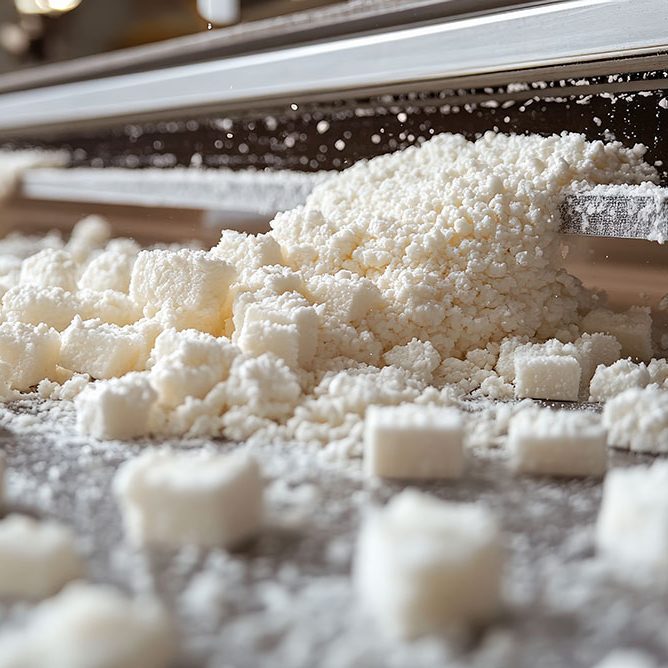Quick Scrolls
Sugar Production: Solving Humidity Challenges
Maintaining optimal humidity levels is crucial for sugar processing, storage, and transportation. Desiccant Technologies Group provides a highly effective solution by removing excess moisture, ensuring stable production and storage conditions.
The Impact of Uncontrolled Humidity in Sugar Production
Poor humidity control can cause:
- Sintering and caramelization – sugar hardens and degrades during processing
- Clumping and sticking – affecting transportation, packaging, and usability
- Condensation in storage areas – leading to moisture buildup on walls and roofs
- Mould and bacteria growth – compromising hygiene and safety
- Production stoppages – causing downtime and inefficiencies
- Metal corrosion – damaging equipment and storage infrastructure
- Failures in electrical and electronic systems – leading to unexpected breakdowns
The best way to prevent these issues is by removing excess moisture using desiccant dehumidification throughout sugar production and storage.
Where Humidity Control Is Needed in Sugar Processing
Excess moisture can negatively impact product quality at various stages of sugar production and handling:
- Granulated Sugar Processing
- Lump Sugar Production & Pressing
- Sugar Drying & Cooling
- Belt Conveyor Transport to Silos & Storage
- Pre-packing & Long-Term Storage
To ensure sugar remains free-flowing and uncontaminated, optimal humidity levels must be maintained:
- 30% – 50% RH during production
- 50% RH at 24°C for storage
Why Choose Desiccant Dehumidifiers for Sugar Production?
Desiccant dehumidifiers from Desiccant Technologies Group are designed to meet the strict environmental conditions required for sugar production and storage. Our systems provide:
- High drying efficiency with low energy consumption
- Effective operation at low temperatures
- Compact, lightweight design for easy installation
- Fully automated humidity control for seamless operation
- Corrosion-resistant casing (stainless steel or Aluzinc) for durability
- Compliance with all EU Directives and quality standards
By integrating desiccant rotor technology, we ensure that humidity remains at optimal levels, preventing clumping, condensation, and contamination throughout sugar production and storage.

Benefits of Installing DT Group Dehumidifiers
By using Desiccant Technologies Group dehumidifiers in sugar production and storage, manufacturers can:
- Maintain sugar quality and prevent clumping
- Reduce product waste by preventing caramelization and sintering
- Prevent mould, bacteria growth, and contamination
- Eliminate condensation and moisture buildup in storage facilities
- Protect equipment from corrosion and extend its lifespan
- Reduce production downtime by preventing equipment failures
- Improve hygiene conditions in production and storage areas
With decades of experience in industrial dehumidification, Desiccant Technologies Group delivers high-tech, efficient, and reliable solutions for sugar production and storage, ensuring compliance, product quality, and operational excellence.
